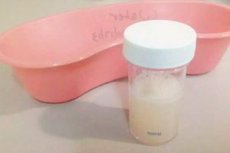Treatment of bronchoalveolar fluid
Last reviewed: 19.10.2021

All iLive content is medically reviewed or fact checked to ensure as much factual accuracy as possible.
We have strict sourcing guidelines and only link to reputable media sites, academic research institutions and, whenever possible, medically peer reviewed studies. Note that the numbers in parentheses ([1], [2], etc.) are clickable links to these studies.
If you feel that any of our content is inaccurate, out-of-date, or otherwise questionable, please select it and press Ctrl + Enter.

The main task of bronchoalveolar lavage is the production of cells, extracellular proteins and lipids that are present on the epithelial surface of the alveoli and terminal airways. The obtained cells can be estimated using the cytological method as well as in biochemical, immunohistochemical, microbiological and electron microscopic studies. The routine procedure involves the analysis of the total count and each cell count individually, and if possible, the detection of lymphocytes by staining with monoclonal antibodies.
Normal bronchoalveolar lavage fluid in nonsmokers contains 80-90% of alveolar macrophages, 5-15% of lymphocytes, 1-3% of polymorphonuclear neutrophils, less than 1% of eosinophils and less than 1% of mast cells, and cells of bronchial and flat epithelium. The ratio of subpopulations of T-lymphocytes CD4 / CD8 = 2: 2.
Analysis of the cytogram of bronchoalveolar lavage in interstitial lung diseases reveals the dominant cellular population, which, determining the nature of the alveolitis, allows a certain degree of probability to speak in favor of the diagnosis of "sarcoidosis, exogenous allergic alveolitis", etc. Quantitative assessment of the bronchoalveolar lavage cellular composition should be built not so much on the indicator of an absolute number of cells, but rather on the determination of the percentage ratios of cellular populations in a patient and comparing them with a illogical healthy donors.
Depending on the cellular composition of the bronchoalveolar lavage, the alveolitis can be classified into two types: type 1 - an increase in lymphocytes (characteristic of sarcoidosis, hypersensitive pneumonitis, tuberculosis, berylliosis, fungal infections), type 2 - an increase in neutrophils (characteristic of idiopathic pulmonary fibrosis , asbestosis, pneumoconiosis, chronic obstructive pulmonary disease).
Cytological examination of bronchoalveolar flushing plays an important role in the diagnosis of inflammatory changes in small bronchi and bronchioles. For ALS in chronic bronchitis is characterized by an increase in the cytogram of the proportion of neutrophilic leukocytes and a decrease in macrophages. O.M. Grobova et al. (1989) studied the cytogram of bronchoalveolar lavage in chronic bronchitis and the possibility of using it to determine the degree of activity of inflammation in the bronchial tree. Three degrees of activity of the inflammatory process in the bronchoalveolar medium are distinguished.
- At the I degree of activity of the inflammatory process, the content of neutrophils significantly increases in the cytogram (p <0.001). The number of cells of the cylindrical, integumentary and squamous epithelium sharply increases, which are absent in bronchoalveolar lavage in healthy individuals.
- For the II degree of activity of the inflammatory process, a sharp increase in the relative amount of neutrophils (p <0.001) is typical, the number of cells of the cylindrical epithelium is significantly reduced.
- At the III degree of activity of the inflammatory process, the number of cells in bronchoalveolar lavage increases (p <0.01). The number of neutrophils increases significantly (p <0.01), then the number of lymphocytes does not change. The number of all kinds of epithelial cells and destroyed cells decreases.
In addition to determining the type of cellular elements, the material obtained with diagnostic bronchoalveolar lavage is used to study the functional activity of alveolar macrophages and other immunological, biochemical and microbiological studies.
During bronchoscopy, the normal tracheobronchial tree is as follows. The voice gap is of regular shape. Vocal folds are mobile in full. The underlaid space is free. The trachea is free, the carina is sharp and mobile. The ores of the bronchi of IV orders are free, round or oval, their spurs sharp, mobile. The mucous membrane of all visible bronchus is pale pink, with a delicate vascular pattern. The mouth of the mucous glands is punctate. The secret is slimy, liquid, in a small amount.

